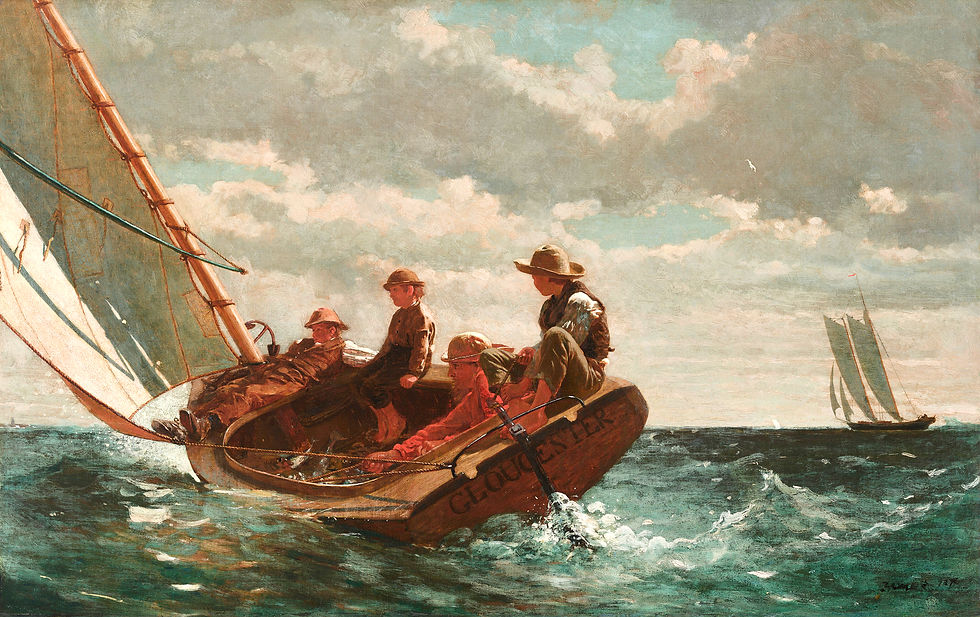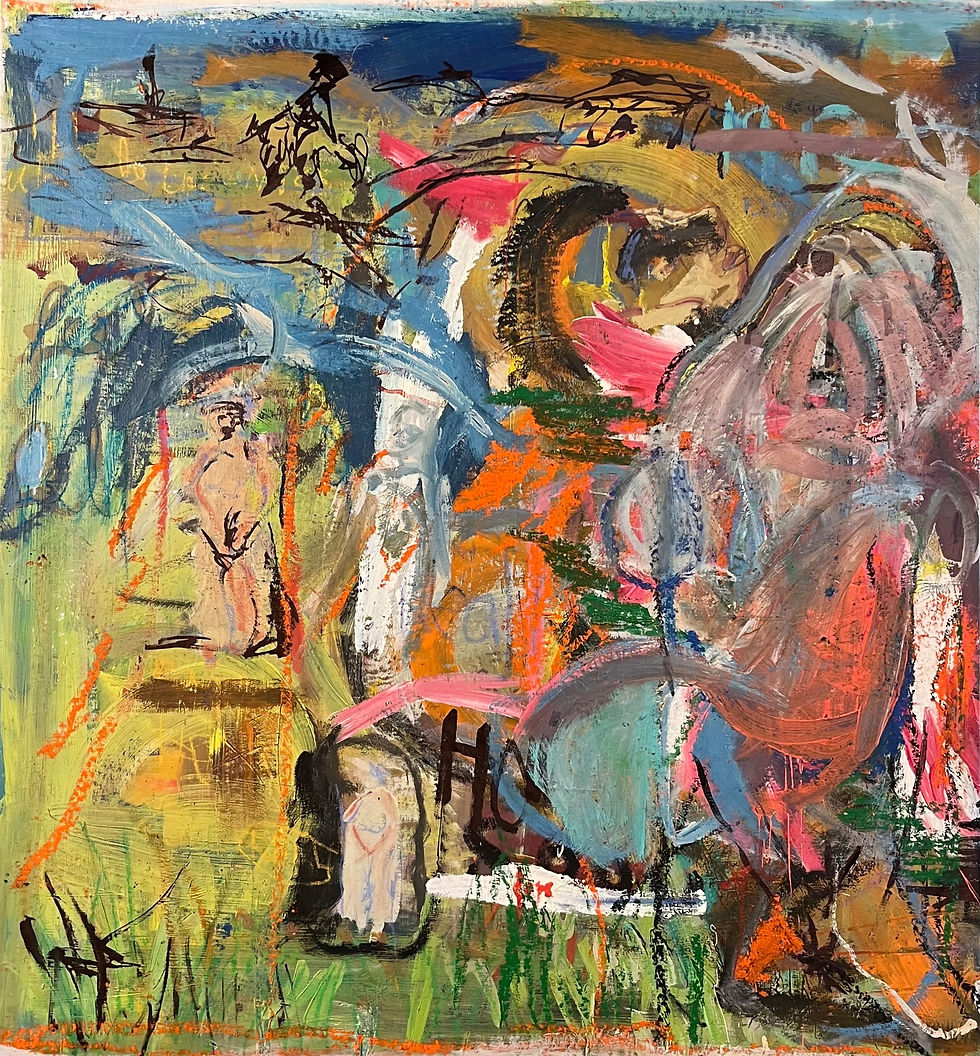Threads on the Wind: Navigating Fate in Ella Wheeler Wilcox’s Verse
- Galerie Sara Lily Perez

- Jul 23
- 3 min read
As you approach “The Moirai’s Loom” exhibition, we see a subtle intertwining between mythology and reality, where the concept of the Moirai loom above each of us. Within this blend, Ella Wheeler Wilcox’s poem, The Winds of Fate, resonates deeply. It beckons us to ponder the question that has persisted and haunted us throughout all of history : Are our lives shaped by destiny, predetermined and fixed, or by our own choices and the stories we tell ourselves?

Wilcox's poem does not attempt to preach, or entangle the mind in complex verbosity or obscure vocabulary. Its simplicity is what makes it resonates deeply.

Wilcox begins with the imagery of two ships diverging from each other in opposite directions, despite being carried by the same winds, blowing in the same direction. She tells us that it is "the set of the sail" that causes them to go in different directions, rather than the wind itself. Here, we can see that the wind is expressed a force of fate, and us, the boats, or rather, the people manning the boats. Wilcox imparts a daring and timeless insightt, one that perfectly aligns with what our exhibition, The Moirai's Loom, attempts to express : Perhaps the forces of fate and destiny are real, gently guiding us towards our destination. However, it is ultimately our choices, and the way we choose to interact with the wind, setting our sails and our fates, that determine the path we take, constituting in our destinies as we believe.
With this insight, the poem further mirrors The Moirai's Loom, highlighting that threads handed down by ancestry, chance, and history, only form the backdrop against which new patterns can be woven. The loom is not only a symbol of tradition and inheritance, but also of the creative agency of our artists - Martin Dreves Castillo, Olga Moș, and Serhii Hrekh, as well as our visitors.
Wilcox’s poem, like the exhibition itself, invites you to ask which parts of your life are written in fate, and which parts can you edit, redraw, or unravel.

Her answer arrives softly in the poem’s second stanza, where the hazard or calm of the voyage is secondary to the “set of the soul.” It’s an invitation to anyone standing before a blank canvas, or a blank tomorrow, to remember that, while forces beyond our control do exist, it’s the adjustment of our inner compass that primarily shapes our journeys. Our choices and how we choose to view and live our lives is what ultimately shapes us, rather than the vague concept of fate.
There’s comfort in knowing we’re all sailing seas both rough and tranquil. There is power in knowing we can set our sails to naviage the winds of life. Wilcox’s plain-spoken optimism, paired with the mythic imagery of the loom, transforms a simple poem into a lens to look at our own tangled threads and ask ourselves : how am I weaving my story from the threads I’ve inherited, or been given?
Both the poem and the exhibition leave you with questions rather than answers: What threads must I honor? Which can I let go of? Where, amidst fate’s intricate weaving, might I choose a bold colour, a new direction, a pattern all my own?

As you move through “The Moirai’s Loom,” let Wilcox’s words accompany you, reminding you that even within the arms of fate, there is always a place for choice, always a way to reset your sails. And perhaps, in the quiet click of a loom or the soft closing lines of the poem, you’ll find the encouragement to weave your own thread into the ever-evolving tapestry of life.
Written by : Wang Si Hui




Comments